津軽びいどろの代名詞ともいえる「宙吹き」の技法は、坩堝の中で溶けた約1200度(成形温度)のガラスを吹き棹の先端に巻取り、 もう一方の端から息(ブロー)を吹き込んで膨らませながら形を整える技法です。 成形炉で再加熱しながら色ガラスや色ガラスのフリットを重ねて仕上げていきます。 自由自在な成形が可能です。 紀元前1世紀頃から受け継がれてきた伝統の技法と言われています。
Tsugaru Biidoro Technique
In this technique, molten glass in a crucible at about 1,200 degrees Celsius (molding temperature) is wound around the end of a blowing pole, and then blown into the crucible at the other end to expand and shape the glass.
While reheating in the molding furnace, we finish by layering colored glass or colored glass frit.
It is possible to shape the glass in a flexible manner.
It is said to be a traditional technique that has been passed down since the 1st century BC.
mid-air blowing
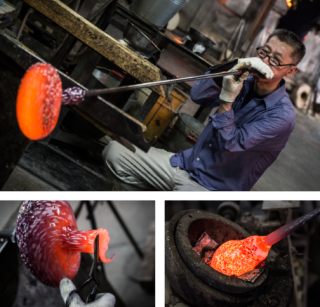
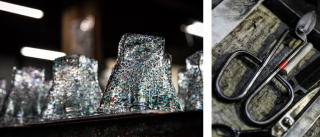
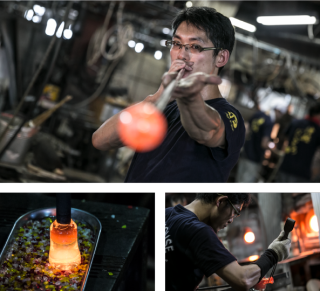
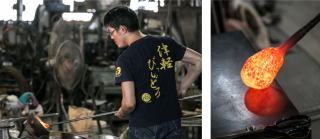
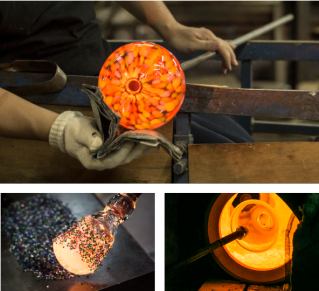
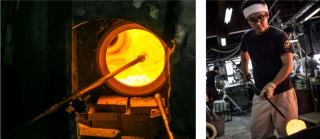
津軽びいどろの代名詞ともいえる「宙吹き」の技法は、坩堝の中で溶けた約1200度(成形温度)のガラスを吹き棹の先端に巻取り、 もう一方の端から息(ブロー)を吹き込んで膨らませながら形を整える技法です。 成形炉で再加熱しながら色ガラスや色ガラスのフリットを重ねて仕上げていきます。 自由自在な成形が可能です。
This is a traditional technique that has been passed down since the 1st century BC.
The "blowing in mid-air" technique, which is synonymous with Tsugaru Biidoro, is a traditional technique of melting (molding) the molten material in a crucible at about 1,200 degrees Celsius. temperature) is wound around the end of a blowing pole and blown in from the other end to inflate the glass. This is a technique for shaping while shaping. While reheating in the molding furnace, we finish by layering colored glass or colored glass frit. Flexible shaping is possible.
Spin molding
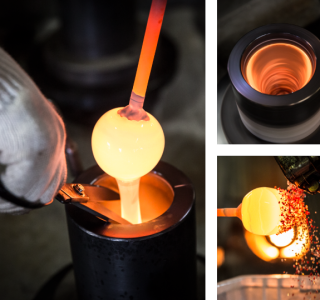
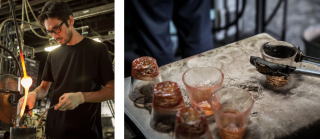
金型のなかに融けたガラスを落とし込み、金型自体を回すことで、遠心力をつかって成形する技術。金型の回し方・速度によって風合いが異なり、同じ金型を使っていても職人によって僅かずつ個性が生まれます。ガラスを入れるタイミングや回し方を工夫して模様を描くことも可能です。
A technique that combines the high productivity of molds with the natural and soft appearance of handwork.
A technique for molding using centrifugal force by dropping molten glass into the mold and rotating the mold itself.
Texture differs according to the way and speed of the mold's rotation, and each craftsman's individuality is slightly different even when the same mold is used.
It is possible to draw patterns by changing the timing and the way of turning the glass.
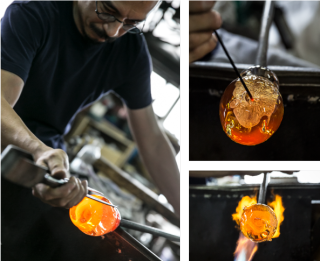
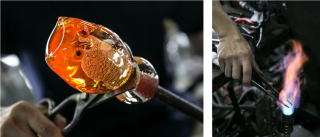
坩堝から融けたガラスを巻き取り、棹の取り回しのほか、コテやハサミ、金属製のハシなどを用いて造形物をつくる技術です。型を使わないため、同じものはひとつとしてつくることができません。僅かな加減で表情が大きく変わり、職人一人ひとりの個性が現れます。
This is a technique for creating a lively shape without using a mold.
This technique involves winding molten glass out of a crucible, and then turning a pole, as well as using trowels, scissors, metal scissors, and other tools to create a shape.
Since no mold is used, no two pieces are alike. Each craftsman's individuality is reflected in his or her work.
Pin Blow
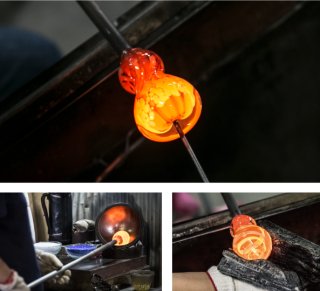
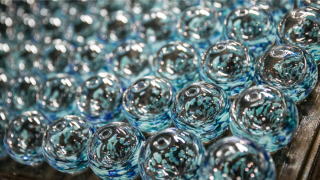
ガラス玉にピンで穴を空け、水で濡らした新聞紙を差し入れて水蒸気で膨らませる技法です。ピンを入れる中心の取り方と、水蒸気で膨らませる速度の調節には職人それぞれのコツがあり、緻密で繊細な調整が求められます。なめらかな質感が特長で、小振りな製品も美しく仕上がります。
A technique for making glassware beautiful by inflating it with water vapor.
In this technique, a hole is made in a glass ball with a pin and a piece of newspaper wet with water is inserted, and then the glass is inflated with water vapor.
Each craftsman has a knack for adjusting the center of the pin and the speed at which the glass is inflated by the steam, which requires precise and delicate adjustments.
It is characterized by a smooth texture, and even small products are beautifully finished.